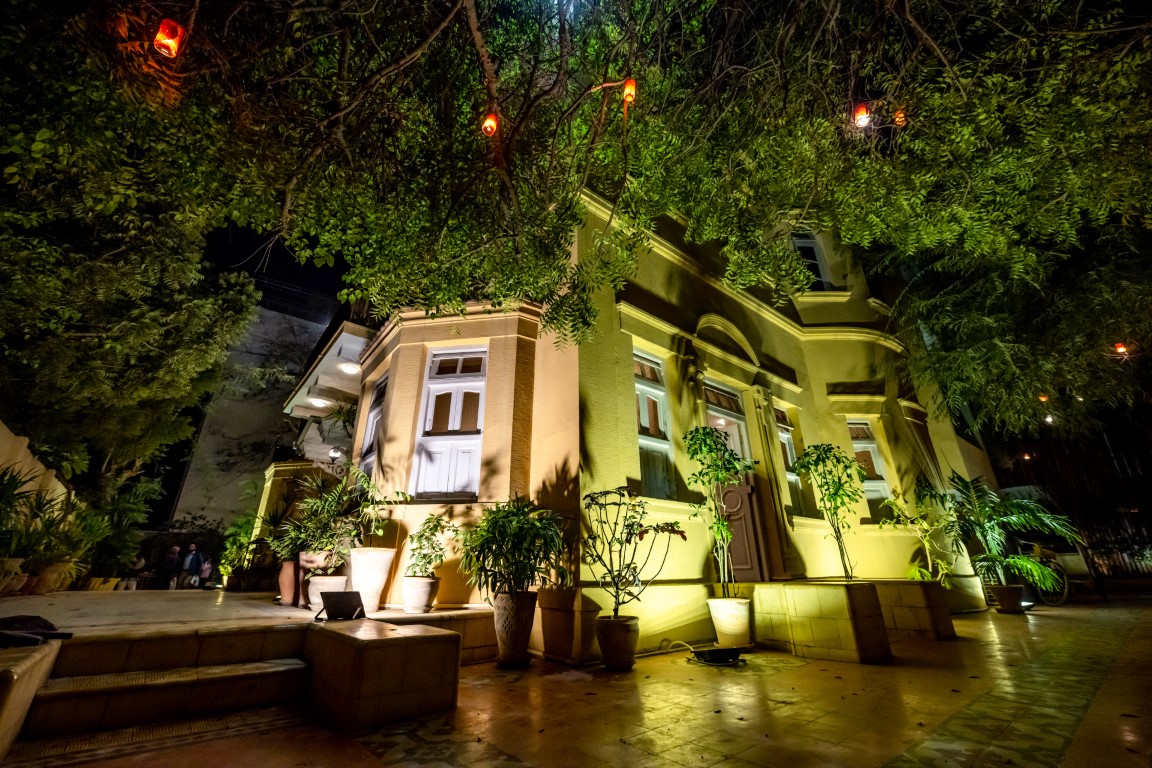
April 8, 2025
TDF Ghar – Reliving the True Spirit of Old Karachi
Nestled in the heart of Karachi’s historic Jamshed Quarters, TDF Ghar stands as a beautifully restored 1930s residence—offering a rare and authentic glimpse into the cultural and architectural fabric of old Karachi. Revived by The Dawood Foundation (TDF), this heritage conservation project is more than a tribute to the city’s past; it is a dynamic space that fosters dialogue, diversity, and community engagement in a city that is constantly evolving.
Originally the home of Hajiani Hanifa Bai, a woman of grace and influence in her time, the house has been meticulously restored to retain its original character. From hand-laid tiles and intricate wooden staircases to breezy verandas and a rooftop that frames the iconic Mazar-e-Quaid, every element has been thoughtfully preserved. The house quietly whispers stories of a bygone era, making it a place where the soul of the city endures—gently but resolutely.
A Space Reimagined for the Public
Once a private residence, TDF Ghar has been transformed into a vibrant and inclusive public space that welcomes individuals from all walks of life. It offers a welcoming environment for informal learning, cultural exchange, and the celebration of Karachi’s diverse heritage.
The vision behind TDF Ghar draws inspiration from the cosmopolitan spirit that once defined the city—a Karachi where people of varying religions, ethnicities, and cultures lived side by side in harmony. In this spirit, the Ghar now hosts a wide array of activities, including heritage exhibitions, artist residencies, talks, performances, storytelling sessions, and interactive workshops that invite visitors to reflect on Karachi’s layered and multifaceted identity
A Model for Sustainable Heritage Preservation
One of the unique aspects of TDF Ghar is its self-sustaining operational model. Income generated through event hosting, space rentals, guided tours, and partnerships is reinvested directly into the upkeep and continued development of the space. This approach not only preserves the building itself but also serves as a replicable model for sustainable heritage conservation across Pakistan—demonstrating how cultural preservation can be both impactful and financially viable without heavy reliance on external funding.
Guiding Principles and Vision
At the heart of TDF Ghar lies a set of guiding principles grounded in inclusivity, harmony, and historical consciousness. The space is designed to promote peace and mutual understanding, encouraging people from different backgrounds to come together, engage in open dialogue, and reconnect with their shared history.
By offering a tangible link to the past, TDF Ghar cultivates empathy, critical thinking, and a sense of belonging. It challenges dominant narratives by offering alternative perspectives on history, encouraging visitors to view Karachi not just through the lens of nostalgia but as a city with rich intellectual, artistic, and multicultural legacies.
The rooftop, with its panoramic view of Mazar-e-Quaid, is more than an architectural feature—it is a symbolic nod to the ideals of Quaid-e-Azam. It reflects the secular and inclusive vision upon which Pakistan was imagined: a land where unity in diversity is celebrated.
A Living Heritage Experience
TDF Ghar is more than a heritage site—it is a living, breathing space for reflection, remembrance, and reimagining the future. Whether a visitor is a student seeking knowledge, a researcher exploring historical narratives, an artist drawing inspiration, or a curious explorer meandering through Saddar’s historic streets, TDF Ghar extends a warm invitation to all.
Through immersive experiences and thoughtfully curated events, it allows individuals to engage with Karachi’s rich past through a lens of curiosity, inclusivity, and shared cultural memory.
In preserving the spirit of old Karachi, The Dawood Foundation has not only safeguarded a piece of the city’s architectural heritage but also reimagined it as a beacon for unity, creativity, and cultural revival. TDF Ghar stands as a testament to what is possible when heritage preservation meets visionary purpose—a home from the past that speaks profoundly to the future.





